Just five minutes, that was the warning given by the Israeli occupation officer to the residents of a residential building in Sabra, eastern Gaza, to evacuate before it was bombed.
The scene evolved into a day of judgment, with no concern for those who would die under the airstrikes, or those who would survive. When fleeing, we don't think about wearing the appropriate shoes. We don't think about the kilometers we will have to travel by foot, as we carry our belongings and children with heavy hearts and worry. We only think about survival. But after walking the first few kilometers, the pain in our feet begins to overshadow the pain in our hearts.
When fleeing, we don't think about wearing appropriate shoes. We don't think about the kilometers we will travel by foot, carrying our belongings, children and heavy hearts. But it does not take long for the pain in our feet to overshadow that in our hearts.
From the child whose shoe broke while escaping and chose not to stop and fix it out of fear of being targeted, to the two-year-old girl whose feet were blistered during the displacement, to the parents who, while carrying their children out, forgot to put on shoes, the question remains the same. What is the perfect shoe to wear when escaping death?
!Evacuation, evacuation, evacuation
Everyone was shouting “Evacuation, evacuation, evacuation”. People rushed out in their clothes, no belongings in hand. Women were devastated, and children were crying. And as for the men, they carried their children on their backs and fled immediately.
“When the neighbors shouted, evacuate, evacuate... I carried my children and ran out, and two floors down I realized that I was barefoot..”
Mohammed Radi, in his thirties, and his family of three survived the bombing of their apartment building. Other neighbors who did not escape on time were bombed and under the rubble. Radi tells Raseef22, “I heard one of my neighbors warning of a bombing, and to evacuate quickly. We were having lunch at the time – we left everything as it was. I hurried to grab my children and escape with them. My wife carried her bag, containing our identification papers, and we began to descend from the sixth floor to the ground floor on foot. The elevator was not working due to the power outage.”
However, shortly into his evacuation, Radi had realized he was barefoot. “When we reached the fourth floor, I realized that I wasn't wearing shoes. I quickly went back and, like lightning, grabbed the shoes I use for the bathroom, made of lightweight leather, which allows me to move faster. As for my wife, she wore her house slippers, fleeing without any time to search for an alternative.”
Radi and his young family left their building without looking back and unsure of where to go. Overhead, the bombings were raging, and beneath their feet, shattered glass, stone, and fire from the falling shells.
For Gazans fleeing death, footwear is not a priority. What use is a shoe to a dead person? In the moment between life and death, it doesn't really matter if a man wears a woman's shoes, or vice versa. And as for the fleeing children, most of them go barefoot.
Their shoes were torn during their displacement
When Radi’s wife's slipper broke, he stopped for a moment to try to fix it, unsuccessfully. Ultimately, she carried on the journey with just one shoe. By the time they reached the home of some relatives they planned to seek shelter at, the wife’s foot was badly injured and in severe pain. With no medical assistance, she resorted to treating her foot with coffee and bandaging it with a used piece of cloth.
For the Gazans living this war, footwear is not a priority in the face of Israeli missiles, airstrikes, and bombings. Their priority is to survive. What use is a shoe after one is slaughtered? And if the perfect escape shoe does exist, people may not be able to choose its type, color, or shape. In that urgent moment, between life or death, it doesn't really matter if a man wears a woman's shoes, or vice versa. And as for the fleeing children, most of them go barefoot.
I prepared sports shoes for my children
Umm Rami was forcibly displaced by the occupation from northern Gaza to the south. As she prepared her family’s personal belongings, she made sure to choose the appropriate footwear for their journey to escape death.
The forty-year-old mother spoke with Raseef22. She told us that she chose laceless shoes for her children, Rami and Haidar. Stopping for even one moment, to tie undone laces, could have put their lives at risk, especially on Salah al-Din Street, which although the occupation designated for north-south access in Gaza, turned out to be one of the deadliest routes on the Strip.
Umm Rami explains, “We were forced by the Israeli army to leave our home in Al-Faluja, a neighborhood in the north of Gaza. It was a hellish night, Israeli forces were detonating firecrackers all around us. We felt extreme panic and fear, and we felt death on our doorstep. Once dawn broke, we packed a few essential belongings, and prepared our shoes and our children's shoes.”
The mother wore black leather boots without a heel after wiping the dust off them.
The family walked with exhaustion, from their home in the north to Deir al-Balah in the center of Gaza. She shares, “We walked on foot, in front of occupation tanks, for about six kilometers. Sometimes, they would stop us, and instruct us to raise our hands and lie on the ground still. At other points, they asked us to raise white flags and our ID cards. We were ready, and had taken our precautions: we were wearing suitable shoes.”
After finally crossing the occupation checkpoint, the family found an animal-drawn cart to transport them to the displacement area in central Gaza. Once there, they collapsed to the ground; their tired feet could no longer bear to walk, and their shoes were worn thin from the long journey.
I escaped barefoot
As the war persists, so does the suffering. Noor Mohsen, a twenty-year-old from Shuja’iyya in eastern Gaza was forced, along with 12 family members, to flee to Rafah in the south. In the weeks since the war on Gaza started, Mohsen has moved homes more than once, fleeing from death after repeated Israeli occupation bombing.
Mohsen tells Raseef22, “We first fled to our relatives in the Nasr neighborhood. In haste and paralyzed with fear, I didn't even put on my shoes. We walked halfway, before finding a vehicle to take us to our destination. On our first night, Israeli bombardment targeted the house next to ours, so we fled again. My cousin gave me a pair of shoes she used for sports, but they were too small for my feet. They hurt a lot, but it was better than being barefoot. It seems that death is following us. On our third day since leaving home, Israeli planes bombed the entire residential area we were in. Miraculously, we survived and fled again, still without shoes.:
She concludes, “I didn't care about wearing shoes. What good would they do anyway if I am to die? They won’t protect me from the rockets pouring down on us. When I die, I will be buried without shoes.”
“We quickly ran out, and out of fear I didn't even put on my shoes. It seemed like death is following us. But what good would shoes do if I am to die? They won’t protect me from the rockets pouring down on us. When I die, I will be buried without shoes”
Before the war, Mohsen’s footwear of choice was a pair of white high-heeled boots. She no longer has any use for them, and her house has since been reduced to rubble, with all her belongings consumed by the flames.
Once Mohsen and her family settled in Rafah, her mother surprised her with a pair of colorful leather boots for the winter. Most importantly, they are easy to move in, light, and pair well with the outfit she has been in since becoming displaced: jeans and a colorful sweater. The young woman likes to remain in these clothes because they remind her of her lost belongings.
Raseef22 is a not for profit entity. Our focus is on quality journalism. Every contribution to the NasRaseef membership goes directly towards journalism production. We stand independent, not accepting corporate sponsorships, sponsored content or political funding.
Support our mission to keep Raseef22 available to all readers by clicking here!
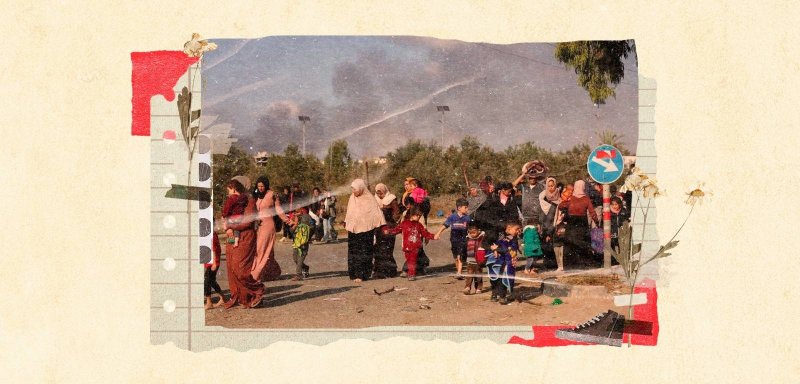
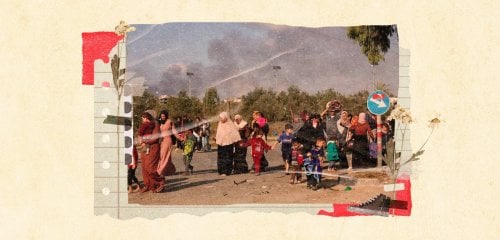
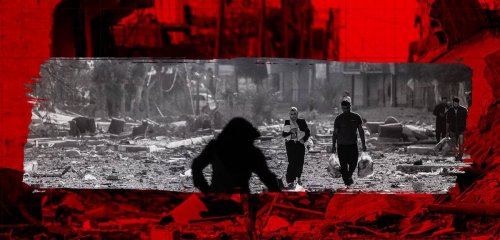
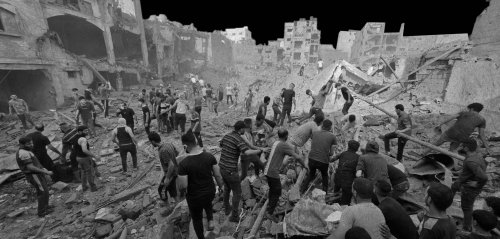
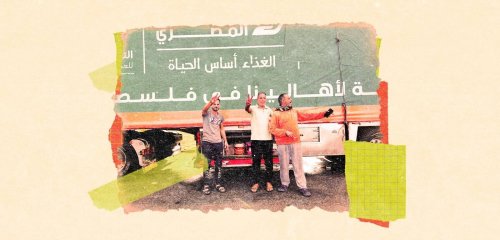




Join the Conversation
Anonymous user -
6 minutes agoتقرير غير دقيقة ومعلومات غير دقيقة هذه كلها روايات لا اساس لها
Anonymous user -
4 days agoتعليقا على ماذكره بالمنشور فإن لدولة الإمارات وأذكر منها دبي بالتحديد لديها منظومة أحترام كبار...
Anonymous user -
6 days agoالبرتغال تغلق باب الهجرة قريبا جدااا
Jong Lona -
1 week agoأغلبهم ياخذون سوريا لان العراقيات عندهم عشيرة حتى لو ضربها أو عنقها تقدر تروح على أهلها واهلها...
ghdr brhm -
1 week ago❤️❤️
جيسيكا ملو فالنتاين -
1 week agoجميل جدا أن تقدر كل المشاعر لأنها جميعا مهمة. شكرا على هذا المقال المشبع بالعواطف. احببت جدا خط...